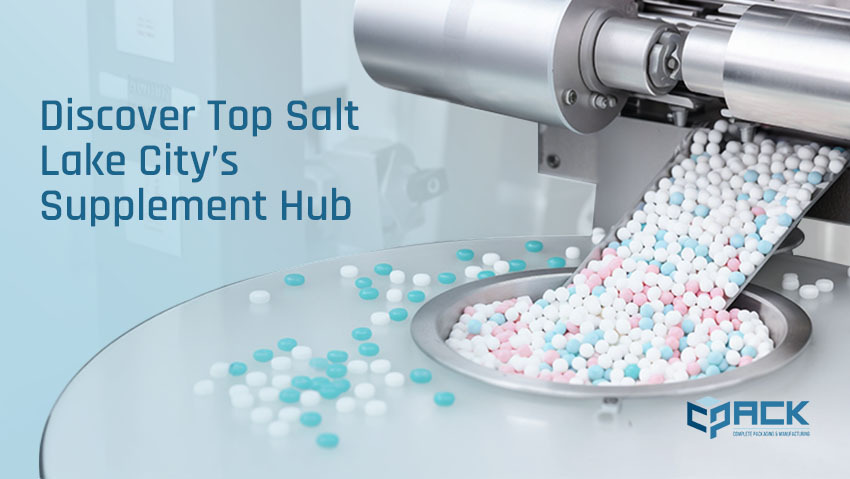
Gummy vitamins and supplements are currently a popular option for individuals who want to take their vitamins and other supplements easily and in a tasty manner. Candies gummies are meant to be different from gummy vitamins which are developed bearing in mind the provision of nutrients alongside texture and taste.
The process of creating these chewy, nutrient-packed treats involves precision, quality control, and innovative techniques, especially in custom gummy manufacturing. Let’s explore the fascinating journey of how gummy vitamins are made inside a factory.
1. Ingredients: Building the Foundation of Gummy Vitamins
The basis of creating gummy vitamins is its choice of components. These include:
Gelatin or Plant-Based Alternatives: Gelatin which is derived from animal collagen is usually added to the gummies to give it a chewy feel. If making vegan or vegetarian gummies, an alternative to gelatin, which includes pectin or agar, is employed.
Sweeteners: To enhance the taste, flavouring agents used are sugar or glucose syrup or any other sweetener including stevia.
Nutritional Components: They may contain vitamins and/or minerals, or any other active compounds like Vitamin C, D, zinc, probiotics, omega-3s and so on.
Flavoring and Coloring: Sometimes natural or artificial flavors and colours are added to gummies to make them more attractive. For the clean-label products, manufacturers have a tendency to use natural extracts from fruits and vegetables.
Preservatives and Stabilizers: These are needed in order to retain the chewiness and the shape of the gummies.
2. Formulating the Perfect Gummy Vitamin Recipe
Each gummy vitamin recipe is carefully formulated to ensure the right balance of taste, texture, and nutritional value. This process involves extensive research and development (R&D). Nutritionists and food scientists work together to determine:
- The exact dosage of active ingredients.
- The best ingredient combination for optimal flavor and stability.
- Compatibility between vitamins, minerals, and other additives to prevent chemical reactions or nutrient degradation.
3. Mixing and Preparing the Gummy Base
Once the recipe is finalized, the manufacturing process begins with preparing the gummy base. Ingredients like gelatin or pectin are heated with water and sweeteners to create a thick, syrupy mixture.
Vitamins, minerals, and other active components are carefully added to the mixture at controlled temperatures to prevent nutrient breakdown.Natural or artificial flavors and colors are blended into the mix for a uniform taste and appearance.
The mixture is thoroughly combined to ensure even distribution of nutrients and other ingredients.
4. Molding the Gummies
After the gummy base is ready, it’s time to shape the gummies. This involves the following steps:
- Filling the Molds: The liquid gummy mixture is poured into pre-designed molds, typically made from silicone or metal. These molds determine the size and shape of the gummies.
- Cooling and Setting: The molds are placed in a cooling tunnel where the gummies solidify. For gelatin-based gummies, refrigeration helps them achieve their characteristic chewiness. Pectin-based gummies set at room temperature.
- Demolding: Once set, the gummies are gently removed from their molds, ensuring they maintain their intended shape.
5. Quality Control: Ensuring Safety and Consistency
Quality control is a major component in the production of gums. Manufacturers follow guidelines to ensure that each production lot of gummies conforms to safety and nutritional requirements. This ensures quality of nutrient values, texture, taste, and shelf life of the samples that are prepared and tested from samples collected. Some of the checks done are visual to determine abnormalities such as defects in shape and size. The production process complies with the guidelines set down by such regulatory bodies as the FDA or GMP (Good Manufacturing Practices).
6. Packaging and Labeling
After preparation, the gummies undergo some tests where after coming out clean they are packed. Gummy factories of the present generation use advanced mechanisms that help in achieving high efficiency as well as accuracy when handling the products. These machines weigh and count the gummies so that they are assured of providing the right portions for each packaging. The gummies are packed airtight, in jars, pouches, or blister packs to retain its quality in the packaging containers.
Further, the products are branded with full details of the ingredients, nutritive value and other information that may be considered useful to the consumer.
7. Customization in Gummy Manufacturing
Flexibility has been introduced into gummy production in light of the increased consumer preference for customized nutrition. This approach also allows brands to build distinct gummies that meet the demand of the customers that may require unique gummy formulas like prenatal vitamins, immune boosters, hair, or skin supplements. It also makes possible specific shapes, tastes, and hues that enrich a brand’s image.
Also, the clean label that includes organic, vegan, or sugar-free gummies is for a more conscious customer. Manufacturers engage their clients in discussion and arrive at the most suitable products that can be produced to reflect the modern trends and market demands to fend off other competitors in the market.
8. Sustainability in Gummy Manufacturing
Sustainability has become an increasingly important focus for gummy vitamin manufacturers, with several key efforts aimed at reducing environmental impact. Manufacturers are using eco-friendly ingredients, such as sustainably sourced gelatin or plant-based alternatives, to create their gummies.
Additionally, they are adopting waste-reduction practices during production to minimize environmental footprints. Recyclable packaging is also a priority, with many brands opting for biodegradable or recyclable materials for their containers. These sustainable practices contribute to the well-being of the environment and also resonate with eco-conscious consumers who prioritize sustainability in their purchasing decisions.
Conclusion
Gummy vitamins and supplements are a testament to the perfect blend of science, innovation, and consumer-focused design. The growing demand for custom gummy manufacturing reflects the industry’s adaptability to meet diverse nutritional needs while prioritizing taste and convenience. As the gummy vitamin market expands, we can expect even more exciting developments in the years to come.





